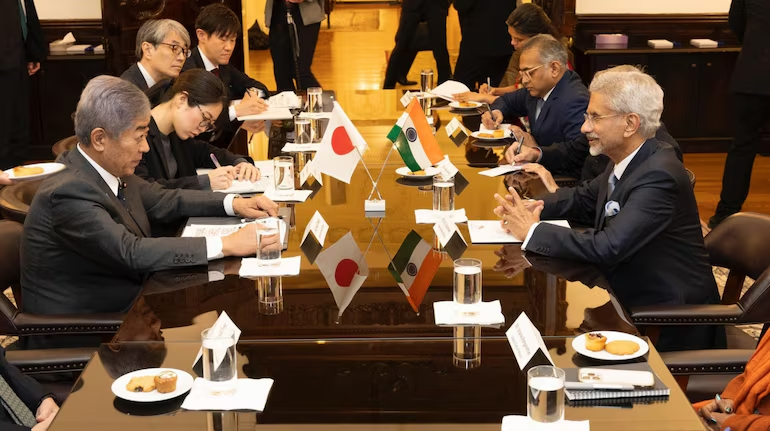Japan to Double Investment Commitment in India to ¥10 Trillion During Modi’s Visit
- MGMMTeam

- Aug 27
- 3 min read
India and Japan are preparing to take their economic partnership to an unprecedented level. During Prime Minister Narendra Modi’s upcoming visit to Tokyo from August 29–31, 2025, Japan is expected to announce a massive ¥10 trillion (approximately USD 68 billion) investment plan for India. This marks a doubling of the earlier target of ¥5 trillion, pledged during former Prime Minister Fumio Kishida’s visit to New Delhi in 2022.
The move underscores the growing synergy between Asia’s two leading democracies, both of whom are committed to strengthening not only economic ties but also their strategic partnership in the Indo-Pacific region.

Expanding Strategic and Economic Engagement
Japanese Prime Minister Shigeru Ishiba and Prime Minister Modi are likely to seal this enhanced investment commitment in a joint statement following their summit talks. The timing is significant, coming at a moment when India is emerging as one of the fastest-growing large economies, while Japan is actively seeking to diversify its supply chains and strengthen its role in the global economy.
Business leaders in Japan have highlighted India’s expanding consumer market, demographic advantage, and regulatory reforms as the key reasons behind this renewed confidence. The investment is expected to span multiple years, demonstrating Japan’s long-term commitment to India’s development journey.
Sectors at the Heart of Cooperation
While the detailed breakdown of the investment is yet to be disclosed, reports suggest that Japan’s focus will extend far beyond traditional infrastructure. Key areas under consideration include semiconductors, artificial intelligence, clean energy, pharmaceuticals, communications, and critical minerals.
To institutionalize this partnership, new frameworks such as the Economic Security Initiative, the AI Cooperation Initiative, and an upgraded Digital Partnership 2.0 are likely to be launched. These initiatives will deepen cooperation in technology, enhance resilience in supply chains, and encourage innovation by supporting startups in both countries.
Symbolic Engagements to Highlight Cooperation
Prime Minister Modi’s itinerary will include a visit to Sendai in Miyagi Prefecture, where he is expected to inspect an experimental Shinkansen bullet train and meet with a leading semiconductor equipment manufacturer. These engagements symbolize the essence of Indo-Japanese cooperation—where cutting-edge technology and infrastructure blend seamlessly with long-term development strategies.
Such gestures not only showcase Japan’s technological strengths but also highlight India’s determination to bring world-class innovation into its domestic economy.
Geopolitical Dimensions of the Announcement
This investment pledge is not only economic in nature but also deeply strategic. Both New Delhi and Tokyo share concerns about China’s growing assertiveness in the Indo-Pacific. By strengthening economic ties, they are reinforcing the vision of a free, open, and rules-based regional order.
In line with this, the two countries are working to update their 2008 Joint Declaration on Security Cooperation, ensuring that their partnership reflects contemporary challenges and opportunities. Thus, the upcoming announcement should be seen as part of a broader Indo-Pacific strategy that blends economics with security imperatives.
Sub-National and State-Level Engagements
Beyond national commitments, Indian states are actively reaching out to Japanese investors. For example, Chhattisgarh Chief Minister Vishnu Deo Sai recently invited Osaka-based SAS Sanwa Ltd to explore opportunities in electronics and food processing within his state. Similarly, at the World Expo 2025 in Osaka, a delegation from Uttar Pradesh showcased investment potential in manufacturing, green hydrogen, electronics, and tourism.
These parallel efforts demonstrate how Indo-Japanese cooperation is filtering down to state governments, ensuring that the benefits of foreign investment are spread more widely across India.
Historical Context and the Road Ahead
India and Japan’s partnership is built on a strong historical foundation. In 2015, Japan extended concessional financing for India’s Mumbai–Ahmedabad bullet train project, which remains one of the largest symbols of bilateral collaboration. More recently, the India-Japan Fund, launched under the National Investment and Infrastructure Fund and JBIC, has been supporting clean energy and mobility initiatives.
The new investment target of ¥10 trillion represents a natural progression of this trajectory, signaling confidence in India’s future and a shared vision for regional prosperity.
Conclusion
Japan’s decision to double its investment target for India is more than just a financial commitment. It is a declaration of faith in India’s economic rise, a recognition of shared strategic interests, and a reaffirmation of the enduring friendship between the two nations.
As Prime Minister Modi arrives in Tokyo later this week, the stage is set for a historic expansion in Indo-Japanese cooperation—one that could shape the economic and strategic landscape of the Indo-Pacific for years to come.
(Sources: Moneycontrol, NDTV, Economic Times)




Comments